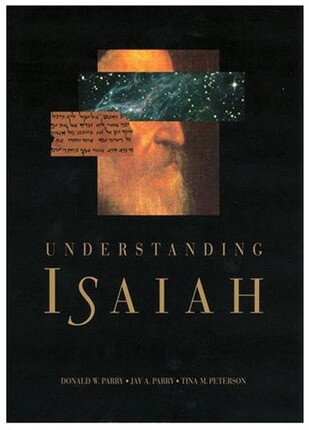Understanding the words of Isaiah is something that many aspire to but sometimes find difficult. One basic element to Isaiah’s writing is Hebrew poetic parallelism; understanding how this works can make Isaiah’s style more comprehensible.
In the most basic sense, parallelism is this: An author expresses an idea (A1). Then the author expresses or reinforces that idea again (A2).
Isaiah 2 is full of parallelism. Parallelism, of which chiasmus may be the most well-known example, is an ancient literary technique of expression.
From this basic pattern, many imaginative derivations can be created. An author can state an idea (A1) but then invert the parallel statement (not A1). Or the author can maximize or minimize the idea (A1). The author can create complex forms of parallelism with multiple elements. Or the author could drive to a central thesis and then return to their starting point, as in chiasmus. The beauty and power of this literary style are found in how the basic pattern is changed, amplified, used, or "mis" used by the author to make a point.
The authors who employ parallelism well create literary beauty that is both delightful to read and instructive to dissect.
Examples of Parallelism in the Scriptures
Using Isaiah 2 as found in the Book of Mormon (see 2 Nephi 12), I provide some representative examples of parallelism, including chiasmus. I use italics, underlining, and bold formatting to show where Isaiah uses repetition in imagery.
Example of Simple Parallelism in 2 Nephi 12:2-3 (see also Isaiah 2:2-3)
And it shall come to pass in the last days, when the mountain of the Lord's house
A1 shall be established in the top of the mountains,
A2 and shall be exalted above the hills,
B1 and all nations shall flow unto it.
B2 And many people shall go and say,
C1 Come ye,
C2 and let us go up
D1 to the mountain of the Lord,
D2 to the house of the God of Jacob;
E1 and he will teachus of his ways,
E2 and we will walk in his paths;
Example of Simple Chiastic Parallelism in 2 Nephi 12:3 (see also Isaiah 2:3)
A1 for out of Zion
B1 shall go forth the law,
B2 and the word of the Lord
A2 fromJerusalem.
Example of Simple Parallelism in 2 Nephi 12:4 (see also Isaiah 2:4)
A1 And he shall judge among the nations,
A2 and shall rebuke many people:
B1 and they shall beat their swords into plowshares,
B2 and their spears into pruning-hooks—
Example of Extended Alternate Parallelism in 2 Nephi 12:7 (see also Isaiah 2:7)
A1 Their land also is full of silver and gold,
B1 neither is there any end of their treasures;
A2 their land is also full of horses,
B2 neither is there any end of their chariots.
Why Parallelism Matters and What It Teaches Us
Significantly, breaking the pattern can be a powerful way to reinforce an overall theme, idea, or doctrine. Just when one has become comfortable with the structure of parallelism, expecting ideas to be repeated in a familiar structure, suddenly the pattern is broken and our attention is driven to ask why. It is then that what is missing, the lack of words that we would expect to be there on the page, point to the most significant theme of the entire chapter.
It is silence that speaks loudest in 2 Nephi 2:11 (see also Isaiah 2:11).
A1 The lofty looks of man shall be humbled,
A2 and the haughtiness of men shall be bowed down,
B1 and the Lord alone shall be exalted in that day.
B2
So important is the message of God’s inimitable exaltedness that Isaiah repeats this parallelistic silence in 2 Nephi 2:17 thereby creating a higher order parallelism or reflection between these two verses.
A1 And the loftiness of man shall be bowed down,
A2 and the haughtiness of men shall be made low;
B1 and the LORD alone shall be exalted in that day.
B2
We would expect a complimentary phrase in B2 to say something about the Lord in His exalted status. Instead, nothing occupies that place in the text; we are greeted with silence.
Why?
Isaiah wished to powerfully reinforce that the Lord ALONE shall be exalted in that day. From a Hebrew parallelistic literary perspective, how do you reinforce the concept that the Lord is ALONE in his exaltation? By not even having the Lord share that exalted space with another sentence declaring His exaltation.
Brilliant, beautiful, sophisticated.
With this basic introduction to ancient Hebrew parallelism you can be empowered to seek and find patterns throughout the writings of Isaiah, other Hebrew prophets, and the Book of Mormon. The effort to find these scriptural literary patterns and structures can enliven your reading and bring enhanced meaning and appreciation of the inspired words of God.
For an excellent resource on parallelism identified throughout the Book of Mormon, see Donald W. Parry (2007), Poetic Parallelisms in the Book of Mormon (PDF Download), Provo, Utah: Neal A. Maxwell Institute for Religious Scholarship. ISBN 978-0-934893-36-7
[A portion of this article was originally published on my blog on November 4, 2012 at taylorhalverson.com/2012/11/04/hebrew-poetic-parallelism-in-isaiah-217/.]
Lead photo from Getty Images



